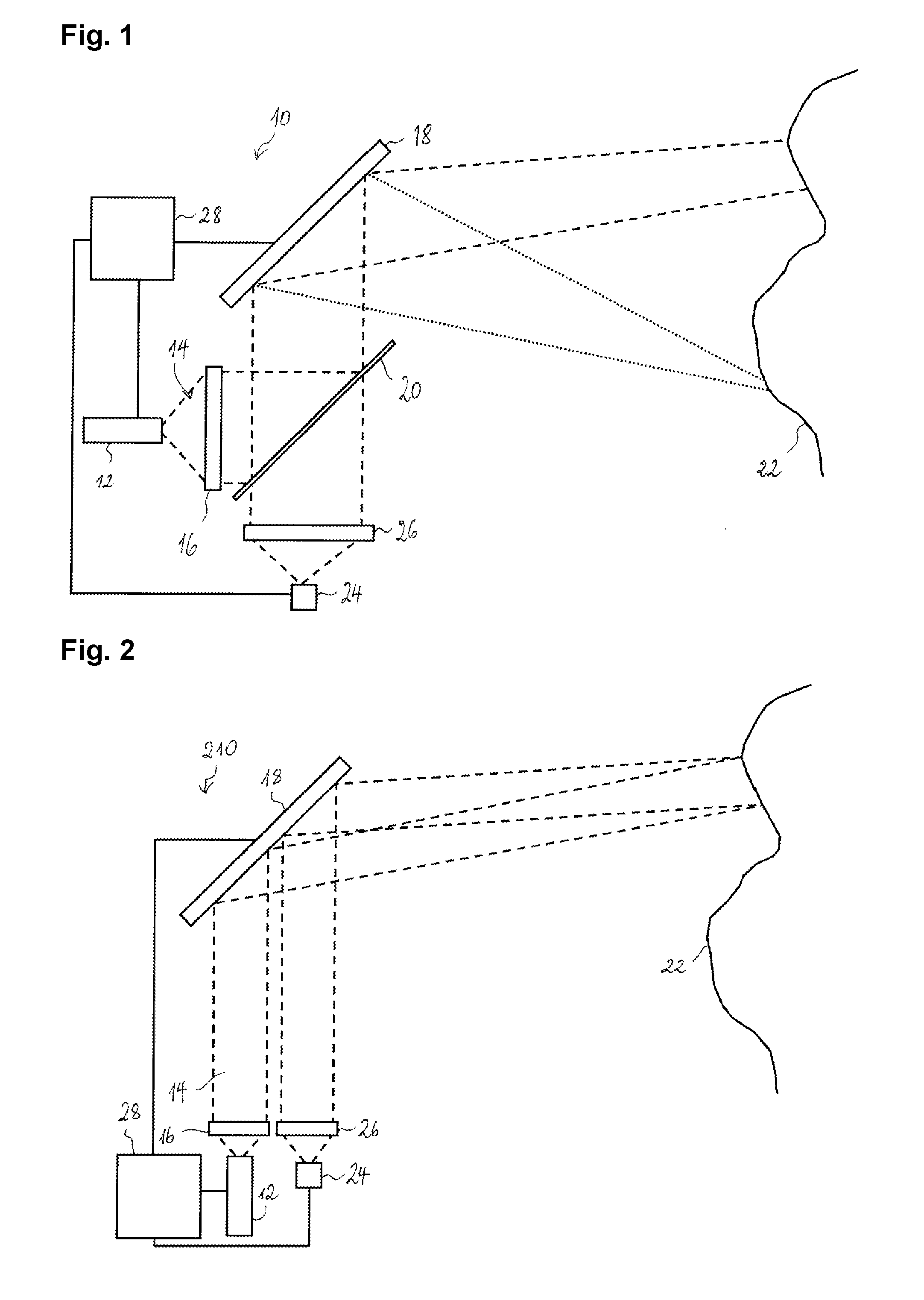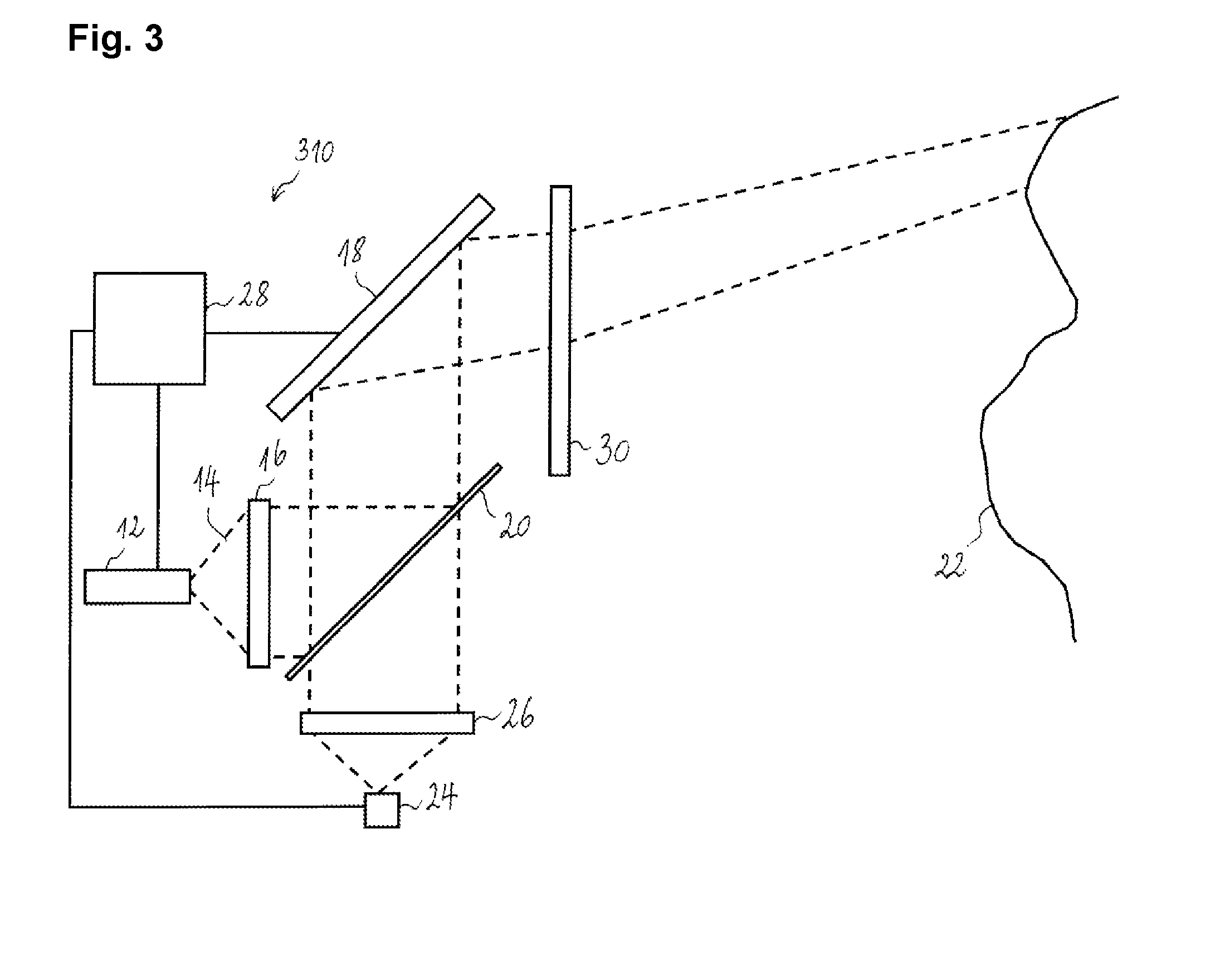Lidar Imager
- Summary
- Abstract
- Description
- Claims
- Application Information
AI Technical Summary
Benefits of technology
Problems solved by technology
Method used
Image
Examples
Embodiment Construction
[0021]A first example of a lidar imager 10 according to the invention is shown in FIG. 1. The lidar imager comprises a light source 12 (e.g. a laser), which emits a light beam 14 with sufficient coherence length. The light beam 14 is shaped (collimated) by optics 16 (one or more lenses and / or mirrors). The emitted light beam 14 is incident on a reflective SLM 18 after passing through a beam splitter 20, which separates the emission and reception light paths. In operation, the SLM displays a sequence of holograms that shape the light beam 14 and redirect it into different parts of the scene 22. When the light beam hits an obstacle in the scene, a part of the light is reflected to the lidar image on the light path in opposite direction. The reflected light is deflected by the SLM 18 and focused on a photodetector 24 by optics 26 after passing through the beam splitter 20.
[0022]A control unit 28 (e.g. a microprocessor, an application-specific integrated circuit, a field-programmable ga...
PUM
 Login to View More
Login to View More Abstract
Description
Claims
Application Information
 Login to View More
Login to View More - R&D
- Intellectual Property
- Life Sciences
- Materials
- Tech Scout
- Unparalleled Data Quality
- Higher Quality Content
- 60% Fewer Hallucinations
Browse by: Latest US Patents, China's latest patents, Technical Efficacy Thesaurus, Application Domain, Technology Topic, Popular Technical Reports.
© 2025 PatSnap. All rights reserved.Legal|Privacy policy|Modern Slavery Act Transparency Statement|Sitemap|About US| Contact US: help@patsnap.com



